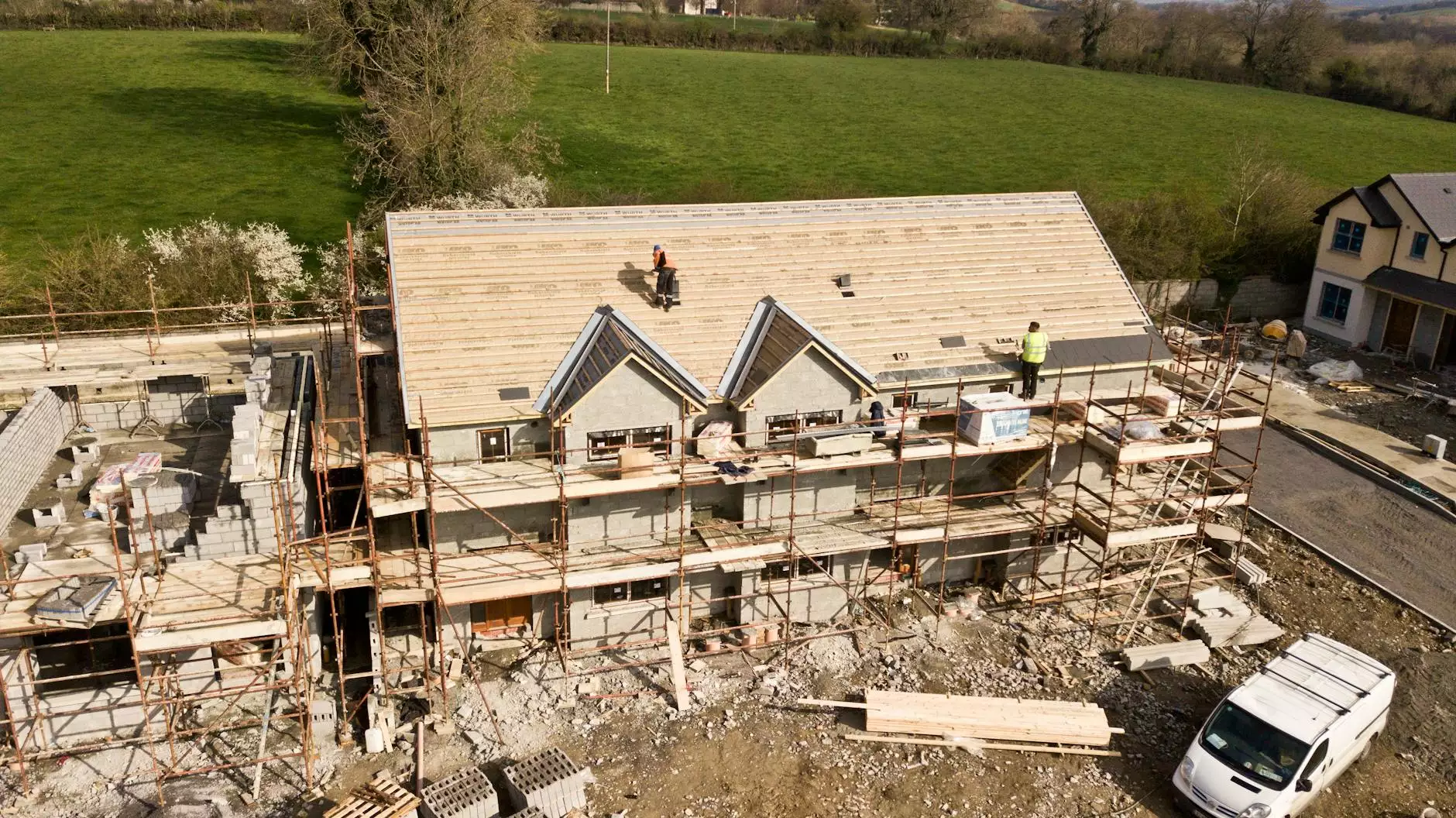Roofing Lingo
Roofing & Construction
Welcome to the world of roofing lingo! At Rocky Mountain Constructors, we believe in providing comprehensive information about different terminologies and concepts related to roofing. Whether you are a homeowner, a contractor, or simply someone interested in the heavy industry and engineering construction and maintenance field, this page is designed to help you gain a better understanding of the intricate world of roofing.
1. Roof Types
Roofing comes in various types, each with its unique advantages and characteristics. Understanding these types can help you make informed decisions when it comes to your roofing needs:
- Flat Roof: A type of roof with little to no slope, commonly used in commercial buildings.
- Pitched Roof: A sloping roof that is commonly found in residential houses.
- Hip Roof: A roof with slopes on all sides, typically used in bungalows and cottages.
- Gable Roof: A roof with two sloping sides that meet in the middle, forming a ridge.
- Mansard Roof: A roof with two slopes on all four sides, creating additional living space in the attic.
2. Roofing Materials
The choice of roofing materials greatly impacts the durability and aesthetic appeal of your roof. Here are some commonly used roofing materials:
- Asphalt Shingles: Affordable and widely used, asphalt shingles offer versatility and come in various colors and styles.
- Metal Roofing: Known for its longevity, metal roofing provides excellent protection against weather elements.
- Slate Tiles: Elegant and durable, slate tiles are often seen on high-end homes due to their natural beauty.
- Wood Shakes: Made from cedar, wood shakes bring a rustic charm to homes and are environmentally friendly.
- Clay Tiles: Commonly found in Mediterranean-style architecture, clay tiles offer durability and excellent insulation properties.
3. Roofing Components
Understanding the different components that make up a roof is essential for both homeowners and contractors. Here are some key roofing components:
3.1 Decking or Sheathing
The base layer of a roof, typically made of plywood or oriented strand board (OSB), provides a stable surface for other roofing elements.
3.2 Underlayment
A water-resistant layer installed directly on top of the decking to protect against moisture and provide additional insulation.
3.3 Flashing
Thin metal strips installed around roof penetrations (such as chimneys, vents, and skylights) to prevent water leakage.
3.4 Shingles or Roof Tiles
The visible outer layer of a roof, shingles or roof tiles protect against weather elements and give the roof its unique aesthetic appeal.
3.5 Ridge Vent
A ventilation system installed along the roof's ridge to allow proper airflow and prevent moisture buildup in the attic.
4. Roofing Terminology
As with any industry, roofing has its own set of terminologies. Here are some common terms you may come across:
- Drip Edge:
- A metal strip installed along the edge of a roof to direct water away from the fascia and prevent water damage.
- Soffit:
- The underside of the roof's overhang, often ventilated to promote airflow and prevent moisture buildup.
- Fascia:
- The vertical board that runs along the roof's edge, providing support for the gutter system.
- Valley:
- The V-shaped area formed where two roof slopes meet, allowing water to flow off the roof smoothly.
- Flashing:
- The process of installing waterproof materials around roof penetrations to prevent water seepage.
- Roof Pitch:
- The steepness or angle of a roof, expressed in degrees or as a ratio of vertical rise to horizontal span.
5. Roofing Maintenance and Inspection
Regular maintenance and routine inspections are crucial for the longevity of your roof. Here are some tips to keep your roof in optimal condition:
- Clean Gutters: Regularly remove debris from gutters to prevent clogging and water damage.
- Trim Overhanging Branches: Trim trees near your roof to prevent branches from causing damage during storms.
- Inspect for Damage: Check your roof for any signs of damage such as cracked shingles, leaks, or sagging areas.
- Address Issues Promptly: If you notice any problems, contact a professional roofing contractor to address them promptly.
- Consider Professional Inspections: Periodic inspections by a qualified roofing professional can help identify potential issues before they escalate.
Remember, a well-maintained roof not only protects your home but also adds value to your property.
Conclusion
By now, you should have a better understanding of the various roofing terminologies, types, materials, and components. Whether you are a homeowner looking to improve your knowledge or a contractor seeking comprehensive information, we hope our roofing lingo guide has been beneficial. At Rocky Mountain Constructors, we pride ourselves on providing top-quality construction and maintenance services in the heavy industry and engineering sector. If you have any questions or need assistance with your roofing needs, feel free to contact our team of experts.




